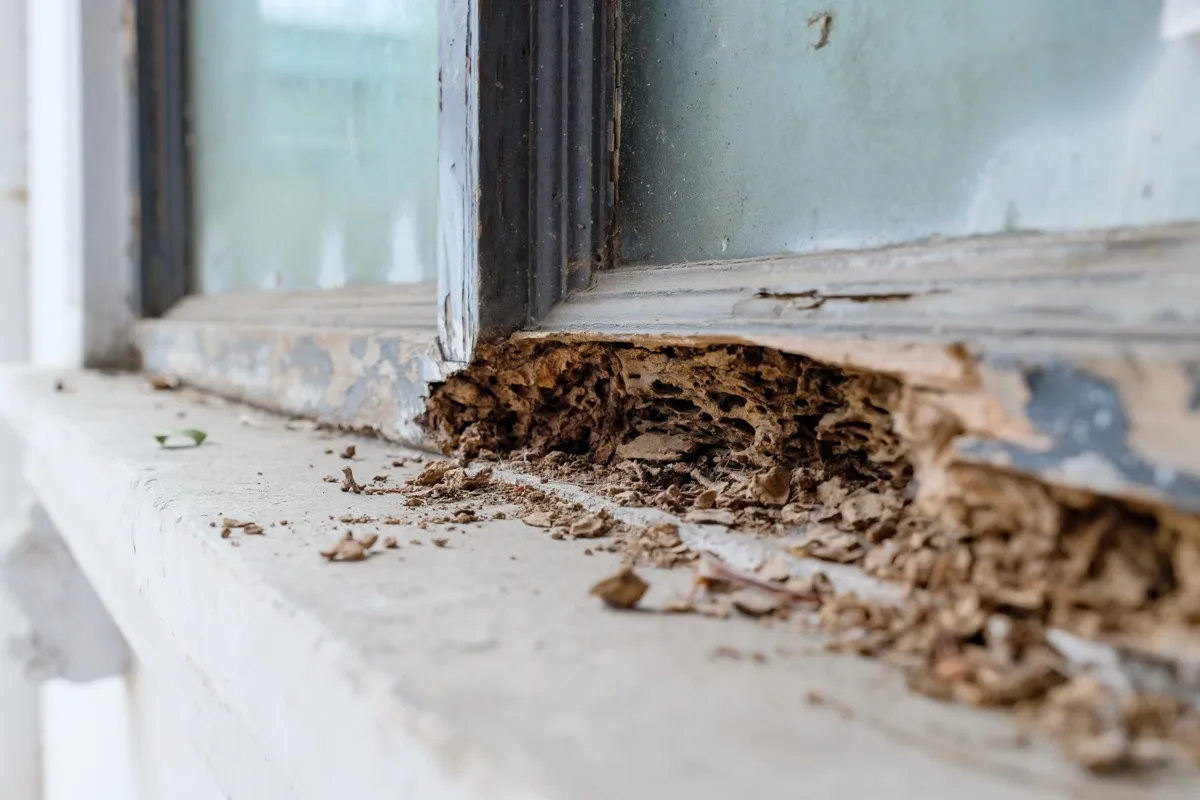Termites are known to give off a musty smell similar to mildew or mold, according to the pros. Pest control expert Natalie Barrett says, “Termites oftentimes smell the same way as their environments. Considering that termites love to create living environments in underground, dark, musty places, it’s natural to say that they have odors similar to mold or damp leaves.” While these kinds of smells would often tip you off to mold that’s hiding in your home, it could actually be a sign that you have termites. To see if you need to be ready for a big bug re-emergence, check out If You See This in Your Yard, Prepare for a Bug Invasion, USDA Says. Before racking up a hefty exterminator bill, you should make sure that the smell of mold is not coming from actual water damage in your home. Some common signs of water damage include water rings on the ceiling, soft or sagging spots on the floor, cracked or warped flooring, and damp cabinets, according to ServiceMaster Restore, a restoration service with 800 locations throughout the U.S.ae0fcc31ae342fd3a1346ebb1f342fcb However, if “there’s no clear sign of the cause [of the smell], it’s time to think about termites,” says Jerry Wang, owner of DIYPestWarehouse. Barrett says if you’re sure you don’t have water damage, “it’s advisable to schedule a professional pest inspection to detect the [termites’] hiding places and stop the invasion.” To learn about another scent that signals an insect infestation, check out If Your House Smells Like This, You May Have a Bug Problem. Examine your home for other signs of termites to get a better idea of whether you have an infestation or not. “Additional signs that you can rely on to detect a termite infestation include tiny holes in your drywall, damaged wood, loose tiles on the floor, and discolored drywall,” says Barrett. Dejon Beasley, the owner of Bug Doctor pest control service in Washington, D.C., says other signs of termites include soft spots on wood structures or mud tubes. If you’re not sure whether you’re seeing signs of termites or not, it’s better to get a professional opinion since the bugs are expert hiders that can cause costly damage. “Because they don’t like the light, they are exceptionally good at hiding,” says Wang. “You may have to remove floorboards or even areas of wall to find where they’re lurking. If you suspect termites, it’s better to act sooner than later.” And for more useful tips and tricks delivered straight to your inbox, sign up for our daily newsletter. While experts suggest that you reach out to an exterminator if you suspect you have a termite problem, there are tactics you can try on your own to address the issue. Wang suggests tackling an infestation with a product containing fipronil or permethrin, but if you’re looking for a more natural solution, the experts at Varsity Termite and Pest Control in Arizona say you can set a wet cardboard trap. A moistened piece of cardboard can attract termites and once they’re making a meal of the damp cardboard, you can burn it, killing the termites with it. They also note that you can spray orange oil on areas where you suspect termites are lurking because it’s rich in D-limonene, which is deadly to termites. To see which other pests are making a major comeback, check out These Awful Bugs You Forgot About May Soon Come Back, Exterminators Warn.



